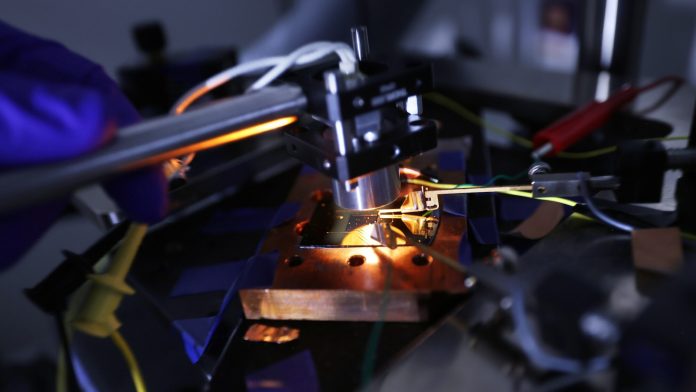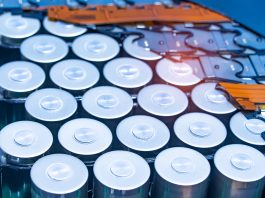Scientists have achieved a groundbreaking advancement in thermophotovoltaic cells that may revolutionise heat storage.
University of Michigan researchers are nearing the theoretical maximum efficiency for converting heat into electricity, moving closer to practical grid applications and promising significant advancements in heat storage technology.
Heat batteries: Transforming renewable energy storage
Solar and wind energy generation does not always align with consumption patterns, necessitating effective energy storage solutions.
Andrej Lenert, associate professor of chemical engineering at the University of Michigan, said: “As we incorporate higher fractions of renewables to achieve decarbonisation goals, we need lower costs and longer durations of energy storage.”
Heat batteries could store intermittent renewable energy during peak production hours and convert it into electricity later using a thermal version of solar cells known as thermophotovoltaic cells.
Thermophotovoltaic cells: Efficient energy conversion
Thermophotovoltaic cells, similar to solar cells, convert electromagnetic radiation into electricity but use lower-energy infrared photons.
The new device achieves a power conversion efficiency of 44% at 1435°C, surpassing the previous 37% efficiency.
Stephen Forrest, the Peter A. Franken Distinguished University Professor of Electrical Engineering at the University of Michigan, explained: “It’s a passive form of battery.
“Unlike electrochemical cells, it doesn’t require lithium mining, avoiding competition with the electric vehicle market.
“Unlike hydroelectric storage, it can be deployed anywhere without needing a water source.”
Cost-effective and simplified heat storage
In a heat battery, thermophotovoltaic cells surround a block of heated material at over 1000°C.
This temperature can be achieved by passing electricity from renewable sources through a resistor or by absorbing excess heat from industrial processes.
“Using electricity to heat something up is simple and inexpensive compared to lithium-ion batteries. This approach provides access to many different materials for thermal storage,” Lenert explained.
Optimising photon capture
At 1435°C, about 20-30% of thermal photons emitted by the storage material have enough energy to generate electricity in thermophotovoltaic cells.
The key was optimising the semiconductor material to capture a broader range of photon energies.
To prevent energy loss from photons outside the semiconductor’s range, researchers developed an ‘air bridge’ structure with a thin air layer and a gold reflector.
This design traps photons with suitable energies for the semiconductor and reflects others back into the storage material for re-emission.
A recent improvement involving two air bridges enhanced the design’s efficiency and extended the useful temperature range for heat batteries.
Forrest expressed optimism about the heat storage technology: “We’re not yet at the efficiency limit.
“I am confident we will achieve higher than 44% and approach 50% efficiency soon.”
The University of Michigan team has applied for patent protection and is seeking partners to bring this technology to market, aiming to transform heat storage and support the growing reliance on renewable energy sources.









